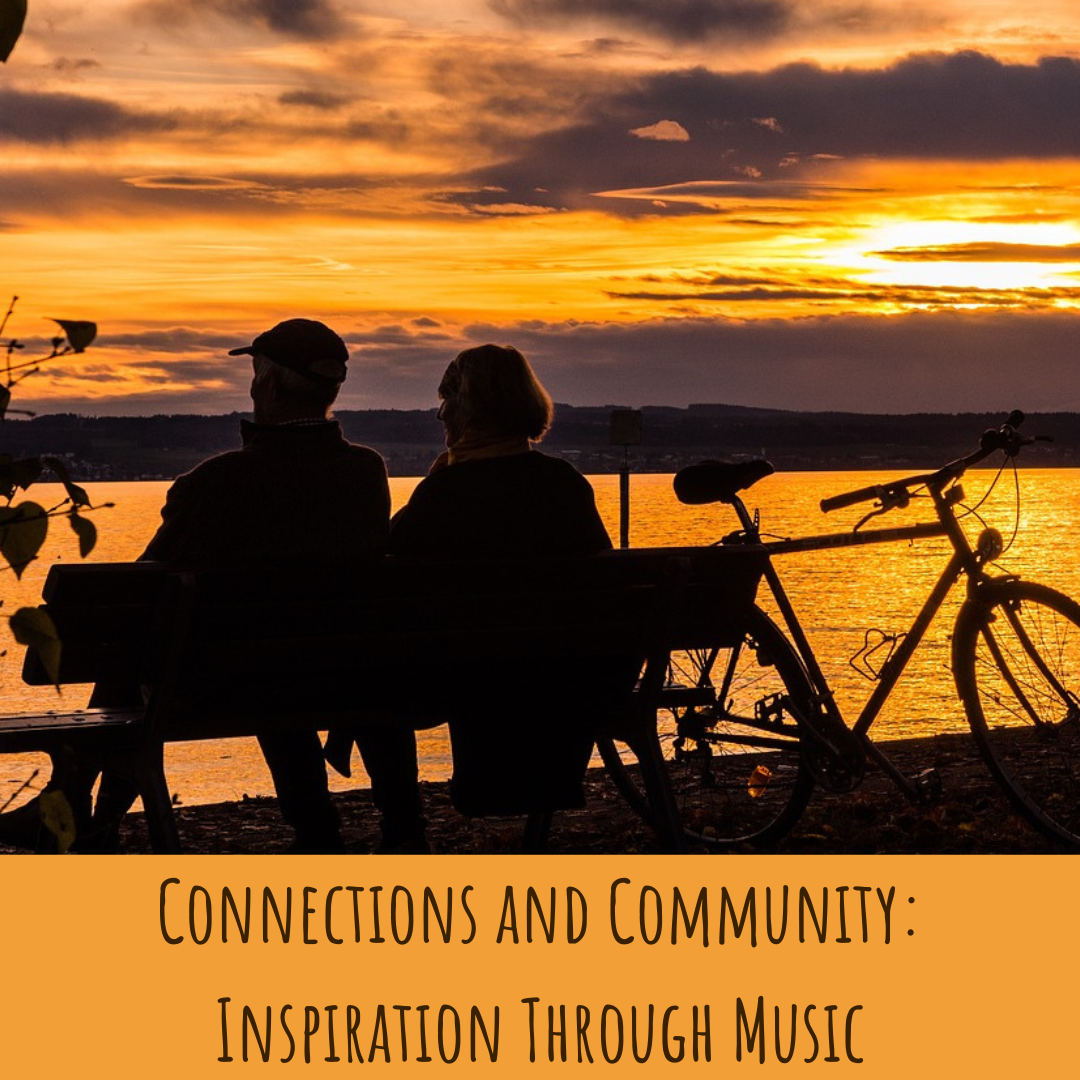A Valley up my Alley
When I was a little lad, the Swan Valley, a dozen or so miles from Perth, the capital of Western Australia, was a place full of Wogs. No, not the bronchial kind, hence the capital letter, but in thinking so, you are half right! After WWII, ethnic immigrants seemed to be spreading like the flu throughout Australia. In those early 1950’s politically incorrect days, anyone who did not have Australian or British heritage, was well, a Wog! We Northern European’s received an easier ride than our Southern European brethren, with some even whispering that we were ‘flake Wogs.’ Not so for the ‘Greasy Greeks,’ the ‘Eye-Talians’ and of course, ‘the Slavs;’ they were real Wogs!
While a few traditional ‘Oz outposts’ remained in the Swan Valley, a homestead here, a clutch of houses and farmlets there, and the Houghton’s vineyard established in 1836, the Valley was increasingly the sinecure of the Slavs, those who came from the Yugoslavia cobbled together by General Tito after WW2, Serbs and Croats, Macedonians and Bosnians. Big, raw-boned, lanky men, who had fought the Germans … and each other! They had similarly built spouses, who were prodigiously philoprogenitive in producing big, raw-boned, well muscled kids, as we often found to our detriment when we travelled ‘up there’ to play Swan Valley or Swan Athletic on soccer pitches stamped amid the grape vines. Kids with an ‘ich’ at the end of their names, Bozich, Rakich, Katich, Talijancich. They played soccer with all the finesse of “British Bulldog,” their line of defence ne’er breached without gouging and grappling and a quick kick to the shins. If you won a game in the Swan Valley it was worth two in the more sedate suburbs. And on the way home in the coach’s car, there was the smell of that bruise healing liniment,’ which invariably sent you into orbit if you got a droplet on the ‘architecture’ when massaging it into a strained thigh or groin!
Back then, the Swan Valley already had plenty of vines. If you were prepared to undertake the backbreaking work of picking grapes amid the flies, the bees, the dust, all under a broiling sun, for the princely sum of sixpence a bucket, oh Mammy, you soon felt some empathy with those folks from the Deep South. Many grapes were simply for the table and while some went into making ‘good’ wines, most grapes were for making ‘plonk,’ which was usually sold in big glass flagons from the back doors of people’s homes. Although wine drinking was perfectly acceptable and legal, its purchase somehow seemed sinister. I remember sitting in the back of my parent’s car, feeling as though we were back in the Prohibition era, father knocking on a back door, money changing hands, father and wine-maker shuffling over dusty ground to a large tin shed, and a few moments later father emerging, and putting a couple of flagons in the boot, just like a bootlegger.
By the late 1960s, when I first started imbibing, there was the start of a sort of informal, word of mouth, ‘wine trail’ through the Valley. Most of the small ‘family owned,’ vineyards had surrounding heady smell of crushed and fermenting grapes, loamy soil and wood from the hogsheads, and certainly gave the impression that one was in the domain of the winemaker. Yet despite labels saying Claret, Burgundy and Hermitage, a tasting usually assaulted rather than assailed the taste buds as you went through the ‘full range’ of four or five wines, that all tasted much the same! Invariably we went home with a flagon of Invalid Port (I kid you not about the name). And later when sitting around your flat or group house and singing songs by Dylan or Peter, Paul and Mary, it didn’t taste half bad either!
There was always talk about the wine-making ‘potential’ of the Valley, based largely on the international popularity of one West Australian wine, the famous “Houghton’s White Burgundy” with its blue stripe label and gold swans logo, a touch of irony perhaps in that Western Australia is the home of the black swan. For a long time, it was virtually the only Australian wine you could find in bottleshops, including in the UK or the US. It is still produced today as the Houghton’s White Classic, after the French took back the generic Burgundy. Back ‘then’ however, most Australians still preferred to drink beer while ‘the girls’ found sustenance in a sherry, Shandy or a Port-o-Gaff (lemonade and stout) in the Ladies Lounge of the pub. Just fifty years ago, so many of Australia’s now premier wine producing areas, were still in their infancy. The world renowned Margaret River region of Western Australia was still just bush-land and small farms. Young people now take the existence of the multi-million dollar wine industry for granted, but to old timers like me, the rate of change has been phenomenal.
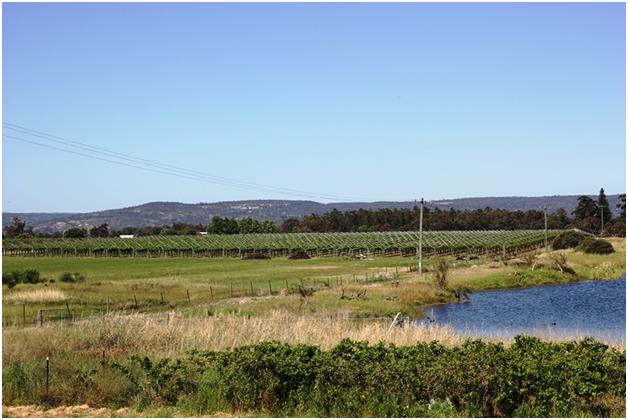
Vines, big skies, and the Darling Ranges; the view to Brigadoon
Like a lot of travelers to Perth, my stepfather and I entered the Swan Valley from the north-west although most of those that do so from this direction, are a few thousand feet above, looking down at a green sward under their glide path which stretches almost to the airport touchdown. I remembered the land approach then was along a spidery Gnangara Road, the area dominated by bush-land, small farms and a huge pine plantation which during many a summer, belched smoke from a forest fire that dominated the horizon like an atomic cloud. Now no more! Now there was a highway with massive octopus roundabouts and tentacles reaching in to new suburbs full of houses with oddly cantilevered roofs signifying modernity. So too shopping centres full of the same brand stores which have sprung up like smallpox all over Australia, in that uni-cultural way which makes you feel right at home even if you are from the other side of the continent. ‘Unique’ is the new speak; unique settings, unique opportunity, unique accessibility, and yet everything is about familiarity and finding your new ‘home,’ one just as cosy as the old, but infinitely more modern and comfortable. And just look at all the amenities, the shops, the miniature lakes, cycle paths and unique parks! It all looked so uniform, with a dollop of romance in the name. Who wouldn’t want to live in Ellenbrook? We however, hurried on.
In many ways, the term ‘Valley’ is a misnomer, for one is hard-pressed to see the gentle dip that gives the region its name. Western Australia has one of the oldest geological formations in the world, and the millions of years of erosion and degradation means that the Swan River is now, from its source in the purple-blue Darling Range to the old historic town of Guildford, the southerly entrance to the Valley, rather tuckered out from a life of cutting and scraping. So the folds in the land are gentle rather than spectacular, the lovely wrinkles that come with a life well lived. Now, covered in vines and replete with everything that is gastro, bistro or organic, things “hand crafted” and “home made,” the old corner shops of my youth, have morphed into trendy pit stops. The Valley is probably looking the best it has been since Creation, in a sort of topographical Maggie Smith type of way. And the visitors are coming in droves, not just from downtown, but from all over the world.
You are enticed into the Valley by a cookie jar of superlatives, the advertising industry unleashed. All food is mouth-watering, and fresh, things are either traditional or boutique and the senses are showcased at retreats, oases and resorts. There are countless invitations to the cellar door and the world of underground secrecy beyond, a sommelier-like invitation to call on nymphs that are light, fruity, rascals, bold, earthy and luscious, just you and your taste buds. Lots of nosing, swilling, holding up to the light, a cautious mouthful, pumping of cheeks as though mouth-washing, licking of lips, and from what I saw, not too much going to the spittoon. A quick sip of water or a taste neutralizing cracker, and then into the next varietal, leaning against the bar as though it might fall over from simply watching all that imbibing. No rush, no hurry, just peace and tranquility as though you are aging with the wine itself. And if there is a noise, it is merely the trill of magpies, the whisper of vespers or the sound of a jazz band for jazz is to wine, what Cabernet is to Sauvignon.
We could have chosen a dozen vineyards before we turned in to Houghtons simply because we knew that they did wine well, and were not disappointed with their ultra-modern tasting room, attractively styled with West Australian timber. There was an outside bistro-cum-coffee shop with a sign inviting you to ‘build your hamper’ from local breads, cheeses, pates, honey and olives, and then enjoying it at a picnic on the vast shady lawns which stretched all the way to the grapevines. In one of the old cellars we enjoyed an exhibition of modern Australian bush art, full of cockatoos in vibrant colours, beach and pastoral scenes, with a splash of Aussie humour. Everywhere, the mood was relaxed and welcoming. It seemed hardly surprising that in the distance we could see a suburb at the end of a carpet of vines, perceptively named Brigadoon.
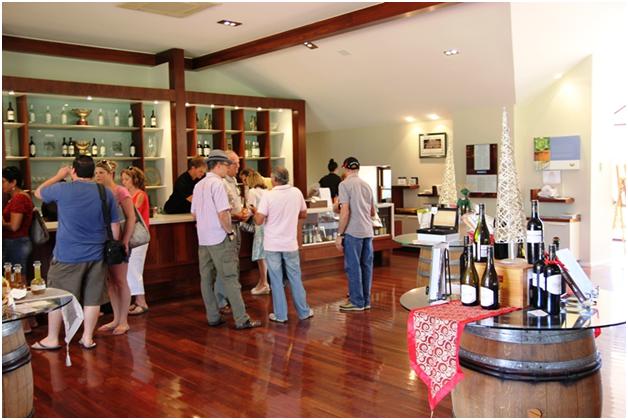
Wine tasting at Houghtons, modernity in one of Australia’s oldest wine houses
Later, we drove on past a few circa 1950’s and 60’s houses, austere with tiny porches and tiny windows, yet here and there, a Grecian column or two as a nod to splendour. Also past houses from the 70’s, then all ‘Chicken Farmer modern’, of cream and brown bricks or a white Spanish and Mission Brown paint-over, time set in stone, the old Valley that I knew. Now many were groovy coffee spots with groovy cane chairs and groovy loungers under the trees serving a hundred varieties of cappuccino, but then ‘groovy’ is a word that sets me firmly in a time capsule unknown to today’s youth. Yet, that is what it looked like to me, decidedly ‘groovy.’ There were still farm stalls selling fruit by the side of the road, but no longer under the Honesty Box system that I knew, and that was a little sad.
We were spoiled for choice, for the Valley caters well for tourism. There was the internationally renowned Vines, a place for the louche to lounge the day away in spas or playing a round or two on the championship golf course. It was already a bit late for tee, or even for a bit of horsing around as there were an abundance of equestrian places to visit as well. The early morning breakfast cyclists, for the roads around the Valley are pleasantly flat, had already done a ‘morning run,’ for like so many places in Australia, the Saturday or Sunday breakie scene is often the biggest event of the weekend. That left the prospect of a huge wildlife park, full of cuddly furries and slinking spitting snakes, a must for tourists, but hardly for dwellers and particularly devout ophidiophobists, even though it contained a motor museum. There was a brief Hmmm at the thought of a chocolate factory, but a look towards my unseeable toes, quickly killed that off. No, a coffee would do.
We followed a bus marked “Gourmet Tours” to a splendid new building plenteously full of people and the swirling aroma of freshly roasted coffee, the Yahava Coffee Roasters pavilion. Like well-travelled Westerners, we breasted the bar and I resisted the temptation to drawl “Hit me with your best shot!” In less time than it takes to say “Blue Mountain Dark Roast” the ‘barman’ had slammed down a cafetiere and a couple of demitasse cups, and was introducing us to an “Outback” coffee from North Queensland with a rather bitter, earthy taste and smelling like wet cardboard. It was not quite my cup of tea. No matter, there were still ten others to taste, coffees from all over the world and as with wine, we smelled, sniffed and sipped, a little cream with one, a spoon full of sugar with another, till we settled on Black Gold, Arabica beans from Papua New Guinea, robust and full bodied enough for unarmed combat at the after-dinner table. Fair coffeed-out, we had a filling Panini and sat in the sun, drinking in the scenery and watching the occasional plane load of tourists coming in to land. All too soon, they would be down here, and I would be up there, speeding away from all this loveliness.
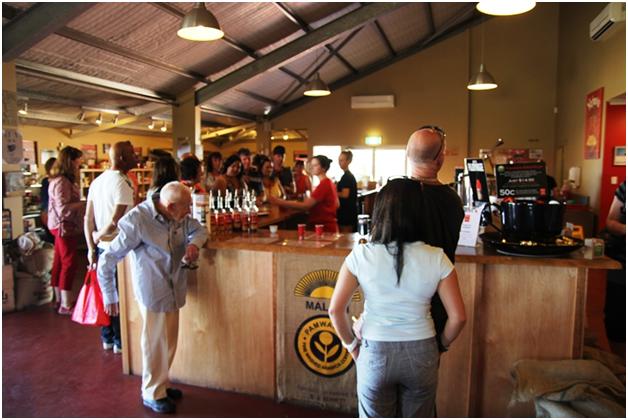
Coffee or wine, the tasting is just as fine.
We drove out of the Valley at carriage pace as it seemed fitting and besides, most other motorists were still lingering over lunch. The big Brisbane & Wunderlich terracotta tile factory of my youth, a tidy amalgam of Anglo-German pre WW1 interests, was still there beside the flood-plain of the Swan River, but was now called Bristile, with about as much appeal to roof tiles as the name Kardashian has to fashion. Then too, Houghton’s had their cellars right next door. You want things not to change, but they do.
Over the Swan, an antiquated bridge of clanking planking used to provide the road link between the picturesque old ‘colonial village’ of Guildford, and the Valley. In the 50’s as kids, we often cycled to the bridge. There we made ‘native damper,’ flour and water packed around a green stick and held over a fire till the crust blackened. With a slab of butter it tasted better than any chocolate, truffles or caviar I’ve tasted in the years since! On the flats were stands of giant river gum trees in which pigeons roosted in the knot-holes and we tried forlornly, to capture them to add to our own flocks, for we collected pigeons then. And in summer, we swam in the river there in our undies, cooling off before the bike-ride home. Memories and the taste of things, never really fade. Seeing it all again, brought back so many thoughts of my Huck Finn youth, whose riches are still with me today.
I last lived in Perth in 1971, nearly 41 years ago, and since then I have lived long years across the continent, and on other continents. But it is places like the Valley and the river that still have me quickly saying “Perth,” whenever I am asked, “Where is home?” for it remains the place that always fills my heart with pleasure. True, it has changed hugely, and I know that metaphorically, I look at Perth as if it is in perpetual sunshine, as a romance that never dulls, a suitor that beckons me still, and never in shades of grey. Oh yes, places like the Valley, are still right up my alley.
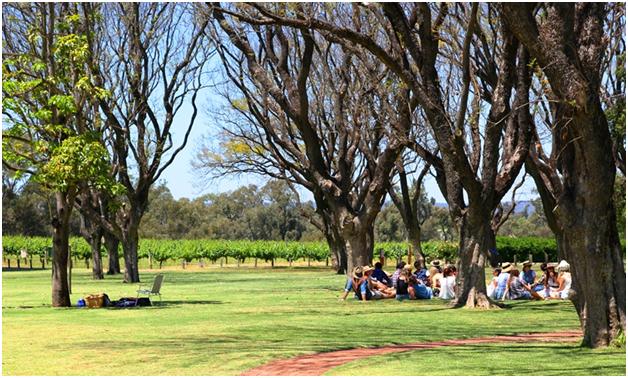
Picnic hampers, wine and sunshine
Winfred Peppinck is the Tales of the Traveling Editor for Wandering Educators


















